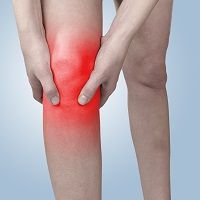Article
Majority of Osteoarthritis Cases From High Income Countries
Author(s):
More than 300 million cases of knee and hip osteoarthritis occurred worldwide in 2017.

Findings of a new study showed that there were more than 300 million cases of hip and knee osteoarthritis worldwide in 2017, predominantly in high income countries.
The number of cases represented an increase of more than 9% on comparable figures in 1990, according to the findings by Marita Cross, PhD, and a team of investigators. Cross, from the Institute of Bone and Joint Research in Australia, and colleagues explored in depth the global, regional, and national trends segmented by age, sex, and country income levels to assess how they might have changed since 1990 when Global Burden of Diseases data were first collected.
Osteoarthritis burden was estimated for 195 countries and territories from 1990-2017. There were 7 super-regions and 21 regions also analyzed.
Only osteoarthritis of the hip and knee were included and needed to be radiologically confirmed as Kellgren-Lawrence grade 2-4. Grade 2 involved 1 defined osteophyte in the hip or knee and pain for >1 month out of the past 12 months. Grades 3-4 included osteophytes and joint space narrowing in hip or knee, with grade 4 including deformity, and pain for >1 month out of the past 12 months.
The team obtained data from the Global Burden of Diseases 2017 for knee osteoarthritis which included prevalence (site-years=395) and incidence (site-years=5) and hip osteoarthritic prevalence (site-years=350) and incidence (site-years=5). A site-year was considered a unique combination of location and calendar year and was defined as a national or subnational geographical unit contributing data in a particular year.
There were 26 countries with data for estimating prevalence for knee osteoarthritis and 4 for incidence, while for hip osteoarthritis, there were 24 for prevalence and 3 for incidence. The number of Global Burden of Disease regions with data was higher for prevalence (knee, 12; hip, 9) compared with incidence (2 for both).
Across the world in 2017, the age-standardized point prevalence and annual incidence rate of osteoarthritis were 3754.2 (95% CI, 3389.4-4187.6) and 181.2 (95% CI, 162.6 to 202.4) per 100,000. Such rates represented an increase in prevalence of 9.3% (95% CI, 8-10.7) and an 8.2% increase in incidence(95% CI, 7.1-9.4) from 1990.
Global age-standardized years lived with disability in 2017 was 118.8 (95% CI, 59.5-236.2), which represented a 9.6% increase (95% CI, 8.3-11.1) from 1990. What’s more, global prevalence of osteoarthritis was higher in women and increased with age, peaking at the >95 years old group among both men and women in 2017.
There was a positive association between the age-standardized years lived with disability rate and Socio-demographic Index regionally and nationally. In 2017, age-standardized prevalence of osteoarthritis ranged from 2090.3-6128.1 cases per 100,000 population.
The US (6128.1 [95% CI, 5729.3-6582.9]), American Samoa (5281 [95% CI, 4688-5965.9]), and Kuwait (5234.6 [95% CI, 4643.2-5953.6]) had the 3 highest levels of age-standardised prevalence. The places that showed the highest increase during 1990-2017 were Oman (29.6% [95% CI, 24.8-34.9]), Equatorial Guinea (28.6% [95% CI, 24.4-33.7]), and the US (23.2% [95% CI, 16.4-30.5%]).
The study authors suggested that preventive measures be taken and reaffirmed throughout the world, especially in the older female population and in places with the highest burden of osteoarthritis. This would effectively reduce the future burden and disability of the condition.
The study, “Global, regional and national burden of osteoarthritis 1990-2017: a systematic analysis of the Global Burden of Disease Study 2017,” was published online in the journal Annals of the Rheumatic Diseases.





